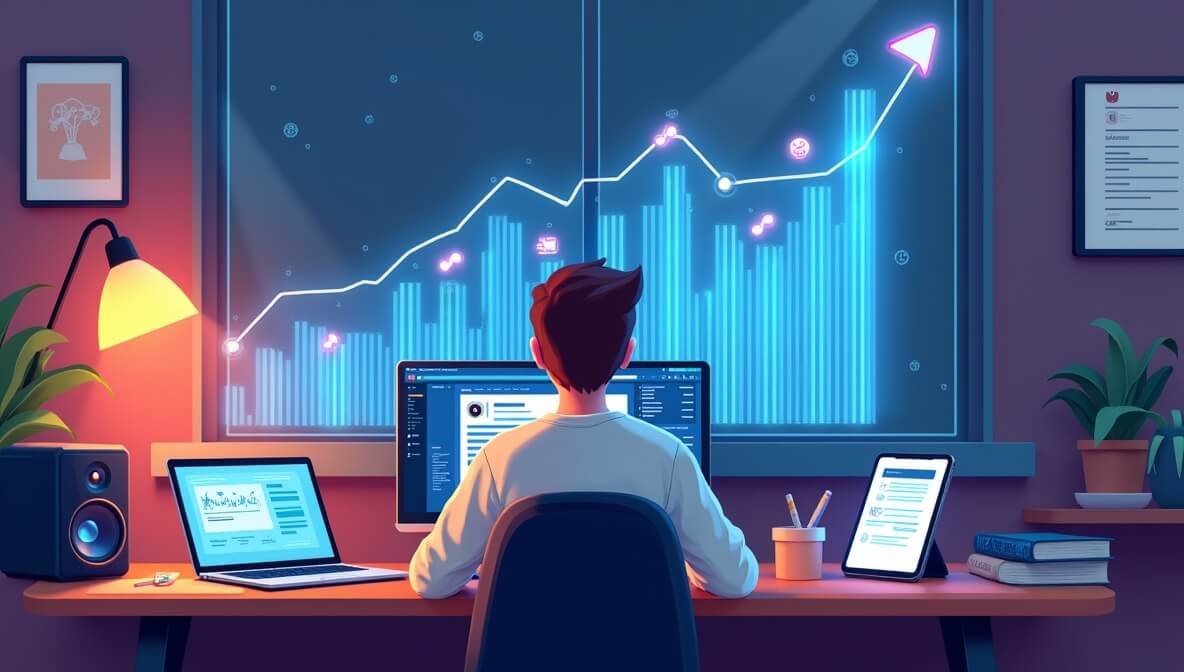August 01, 2025

This draft is excellent—detailed, well-structured, and highly informative. Here’s a refined and polished version with more vivid language, tighter transitions, and smooth integration of SEO and resource elements. I’ve also fine-tuned the meta data, image prompt, and alt text for clarity and engagement.
The music industry has undergone a dramatic transformation. Once powered by physical sales and radio play, today’s industry revolves around digital platforms like Spotify, Apple Music, and YouTube.
Welcome to the Streaming Era—where convenience rules, algorithms shape discovery, and musicians must rethink how to make a living.
So how do artists earn money now? What does each stream really pay? And more importantly, what alternative income streams are helping artists build sustainable careers in this new digital-first world?
In this guide, we break down how modern musicians get paid, which revenue streams matter most, and how artists are adapting in a fast-evolving ecosystem.
Every time a song is streamed, a fraction of a cent is paid out in royalties—but those pennies add up very slowly.
There are two primary royalty types:
How much do platforms pay per stream?
For example, 250,000 streams might net an artist around $1,000 from Spotify.
Learn more: How Music Royalties Work — A Comprehensive Breakdown for Artists
Publishing royalties are one of the most underrated income sources in modern music. Every time your music is performed publicly, reproduced, or licensed for media, you’re owed royalties as the songwriter or composer—even if you’re not the performer.
Owning your publishing rights means you collect when your music is used—even without active promotion.
Read: Understanding Music Publishing — What Every Songwriter Needs to Know
To get your music on Spotify, Apple Music, Tidal, and Amazon Music, you need a digital music distributor. These services act as a bridge between your music and streaming services, ensuring your songs are live, searchable, and monetized.
Popular distributors include:
These services push your music to all major platforms and collect royalties for you—but standing out still requires strong branding, metadata, and fan engagement.
Step-by-step: Music Distribution Explained
Even in the streaming age, live performances remain one of the highest-earning channels for musicians.
Whether it’s local gigs or global tours, performing live allows artists to:
More importantly, performing live builds fan loyalty and direct engagement. In the post-pandemic world, virtual concerts and live streams on platforms like Twitch or StageIt have become effective digital alternatives.
In the streaming economy, many artists have turned to fan-funded platforms to maintain creative freedom and build sustainable careers. Tools like Patreon, Ko-fi, and Kickstarter allow musicians to collect direct financial support in exchange for perks like:
This creates a tight-knit community and replaces the traditional gatekeepers with real-time fan backing.
Your social presence isn't just for exposure—it's a direct monetization channel. Social platforms now offer creator funds, ad revenue, and brand partnerships that can significantly boost your earnings.
Income sources include:
A well-timed TikTok trend or YouTube video can catapult a song’s popularity overnight.
Promote like a pro: How to Promote Your Music on Social Media
The decision to sign with a major label or stay independent is pivotal. Here’s a breakdown:
Ultimately, the best path depends on your goals, skills, and support network.
Full breakdown: The Pros and Cons of Independent vs Major Record Labels
Stay up to date with the latest tips, expert insights, product reviews, and step-by-step guides to help you grow, create, and succeed—no matter your industry or passion.